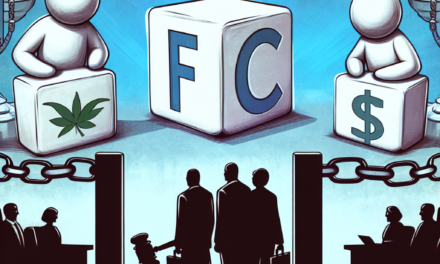Northwell and Nuvance Finalize Merger Agreement
The healthcare landscape in the United States is undergoing significant transformations, driven by the need for improved patient care, operational efficiencies, and financial sustainability. One of the most notable developments in this context is the recent merger agreement between Northwell Health and Nuvance Health. This article delves into the implications of this merger, exploring its motivations, potential benefits, challenges, and the broader impact on the healthcare system in the region.
1. Overview of Northwell Health and Nuvance Health
Before diving into the merger specifics, it is essential to understand the two entities involved. Northwell Health and Nuvance Health are prominent healthcare systems in New York and Connecticut, respectively, each with its unique strengths and operational frameworks.
1.1 Northwell Health: A Leader in Healthcare
Northwell Health is New York’s largest healthcare provider, operating 23 hospitals and over 800 outpatient facilities. With a workforce of more than 76,000 employees, Northwell is known for its commitment to innovation and quality care. The organization has been at the forefront of various healthcare initiatives, including telehealth services, advanced surgical techniques, and comprehensive cancer care.
- Innovative Programs: Northwell has launched several programs aimed at improving patient outcomes, such as its Center for Learning and Innovation, which focuses on training healthcare professionals in the latest medical technologies.
- Research and Development: The health system invests heavily in research, collaborating with academic institutions to advance medical knowledge and treatment options.
- Community Engagement: Northwell actively engages with the communities it serves, providing health education and preventive care services to improve public health.
1.2 Nuvance Health: A Regional Powerhouse
Nuvance Health, formed from the merger of several healthcare organizations, operates seven hospitals across New York and Connecticut. The system emphasizes patient-centered care and has made significant strides in integrating technology into its services. Nuvance is particularly recognized for its focus on mental health services and chronic disease management.
- Patient-Centric Approach: Nuvance prioritizes the needs of its patients, offering personalized care plans and extensive support services.
- Technological Integration: The health system has implemented advanced electronic health record systems to streamline patient care and improve communication among providers.
- Focus on Mental Health: Nuvance has developed comprehensive mental health programs, addressing the growing need for mental health services in the community.
2. Rationale Behind the Merger
The merger between Northwell and Nuvance is driven by several strategic considerations aimed at enhancing healthcare delivery and operational efficiency.
2.1 Expanding Geographic Reach
One of the primary motivations for the merger is to expand the geographic footprint of both organizations. By combining their resources, Northwell and Nuvance can provide a broader range of services to a larger population.
- Increased Access: The merger will enable both systems to reach underserved areas, improving access to healthcare services for millions of residents in New York and Connecticut.
- Shared Resources: By pooling resources, the merged entity can optimize service delivery, reduce redundancies, and enhance operational efficiencies.
2.2 Financial Sustainability
The healthcare industry is facing increasing financial pressures, with rising costs and changing reimbursement models. The merger is expected to create a more financially sustainable organization capable of weathering these challenges.
- Cost Savings: The merger is projected to yield significant cost savings through economies of scale, allowing the new entity to invest in technology and patient care initiatives.
- Diverse Revenue Streams: By combining their services, Northwell and Nuvance can diversify their revenue streams, reducing reliance on any single source of income.
2.3 Enhanced Quality of Care
Another critical driver of the merger is the potential to enhance the quality of care provided to patients. By integrating best practices and sharing expertise, the two organizations can improve patient outcomes.
- Standardized Protocols: The merger will facilitate the development of standardized care protocols, ensuring that patients receive consistent and high-quality care across all facilities.
- Collaborative Research: The combined research capabilities of both organizations will foster innovation and lead to the development of new treatment options.
3. Potential Benefits of the Merger
The merger between Northwell and Nuvance is expected to yield numerous benefits for patients, healthcare providers, and the communities they serve.
3.1 Improved Patient Care
One of the most significant advantages of the merger is the potential for improved patient care. By leveraging the strengths of both organizations, the new entity can offer a more comprehensive range of services.
- Integrated Care Models: The merger will facilitate the development of integrated care models that address the full spectrum of patient needs, from preventive care to chronic disease management.
- Enhanced Care Coordination: Improved care coordination will lead to better patient experiences and outcomes, as providers work together to manage patient care effectively.
3.2 Increased Access to Specialized Services
The merger will also enhance access to specialized services, particularly in areas such as oncology, cardiology, and mental health.
- Expanded Service Offerings: Patients will benefit from a wider array of specialized services, reducing the need for travel to access care.
- Telehealth Expansion: The combined organization can expand telehealth services, making it easier for patients to access care from the comfort of their homes.
3.3 Strengthened Workforce
The merger is expected to strengthen the workforce by creating new opportunities for professional development and collaboration among healthcare providers.
- Training and Development: The combined organization can invest in training programs that enhance the skills of healthcare professionals, leading to improved patient care.
- Collaboration Opportunities: Healthcare providers will have the opportunity to collaborate with colleagues from both organizations, fostering a culture of innovation and excellence.
4. Challenges and Considerations
While the merger presents numerous opportunities, it also comes with challenges that must be addressed to ensure a successful integration.
4.1 Regulatory Hurdles
One of the primary challenges facing the merger is navigating the regulatory landscape. Mergers and acquisitions in the healthcare sector are subject to scrutiny from federal and state regulators.
- Antitrust Concerns: Regulators will closely examine the merger for potential antitrust issues, ensuring that it does not reduce competition in the healthcare market.
- Compliance Requirements: Both organizations must ensure compliance with various healthcare regulations, which can be complex and time-consuming.
4.2 Cultural Integration
Cultural integration is another significant challenge that can impact the success of the merger. Merging two distinct organizational cultures requires careful planning and execution.
- Aligning Values: Leaders must work to align the values and mission of both organizations, fostering a shared sense of purpose among employees.
- Employee Engagement: Engaging employees throughout the integration process is crucial to maintaining morale and ensuring a smooth transition.
4.3 Financial Risks
While the merger is expected to create financial efficiencies, there are inherent risks associated with such a large-scale integration.
- Integration Costs: The costs associated with integrating systems, processes, and personnel can be substantial, potentially impacting short-term financial performance.
- Unforeseen Challenges: Unforeseen challenges may arise during the integration process, requiring additional resources and time to address.
5. The Future of Healthcare in the Region
The merger between Northwell and Nuvance is poised to reshape the healthcare landscape in New York and Connecticut, with implications that extend beyond the immediate benefits of integration.
5.1 A Model for Future Mergers
The Northwell-Nuvance merger may serve as a model for future mergers in the healthcare sector, demonstrating how organizations can collaborate to enhance patient care and operational efficiency.
- Collaboration Over Competition: The merger highlights a shift towards collaboration among healthcare providers, emphasizing the importance of working together to address community health needs.
- Focus on Value-Based Care: The combined organization can lead the way in adopting value-based care models that prioritize patient outcomes over volume of services.
5.2 Addressing Public Health Challenges
The merger also positions the new entity to address pressing public health challenges, such as the ongoing mental health crisis and the need for preventive care services.
- Comprehensive Mental Health Services: The combined organization can expand mental health services, addressing the growing demand for mental health care in the community.
- Preventive Care Initiatives: By focusing on preventive care, the merged entity can help reduce healthcare costs and improve population health outcomes.
5.3 Enhancing Community Engagement
Finally, the merger presents an opportunity to enhance community engagement and strengthen relationships with local stakeholders.
- Community Health Programs: The new organization can invest in community health programs that address social determinants of health and promote wellness.
- Partnerships with Local Organizations: Collaborating with local organizations can enhance the effectiveness of health initiatives and improve community health outcomes.
Conclusion
The merger between Northwell Health and Nuvance Health represents a significant development in the healthcare landscape of New York and Connecticut. By combining their resources and expertise, the two organizations aim to enhance patient care, improve operational efficiencies, and address pressing public health challenges. While the merger presents numerous opportunities, it also comes with challenges that must be navigated carefully to ensure a successful integration.
As the healthcare industry continues to evolve, the Northwell-Nuvance merger may serve as a model for future collaborations, emphasizing the importance of working together to improve health outcomes for communities. The success of this merger will not only impact the organizations involved but also set a precedent for how healthcare systems can adapt to meet the changing needs of patients and communities in the years to come.





